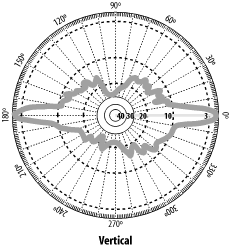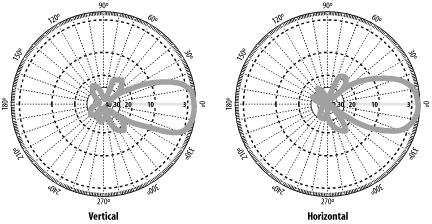1.3 Wireless Alphabet Soup
| < Day Day Up > |
| While it is not the sole focus of this book, there are several chapters that deal entirely with "Wi-Fi," or Wireless Fidelity . This phrase is trademarked by the Wi-Fi Alliance, a group that consists of nearly all 802.11 manufacturers. The Wi-Fi Alliance does product testing and certification for interoperability. 802.11 was defined as a protocol by the Institute of Electrical and Electronics Engineers (IEEE) in 1997. This protocol specification allowed for 1 and 2 Mbps transfer rates using the 2.4 GHz ISM (Industrial, Scientific, and Medical) band , which is open to unlicensed public use. Prior to the adoption of this standard, there were various wireless network vendors manufacturing proprietary equipment using both the 2.4 GHz and the 900 MHz bands. The early adopters of the proprietary technologies and 802.11 were primarily the manufacturing and health care industries, which rapidly benefited from their employees ' mobile access to data. The 802.11 standard uses spread spectrum modulation to achieve high data rates. Two types of modulation were specified: Frequency Hopping and Direct Sequence. 802.11 also uses the Carrier Sense Multiple Access (CSMA), which was developed for Ethernet in 1975 with the addition of Collision Avoidance (CA) ”referred to as CSMA-CA. In 1999, the IEEE adopted two supplements to the 802.11 standard: 802.11a and 802.11b. The 802.11b standard is also referred to as High Rate DS and is an extension of the Direct Sequence Spread Spectrum type of modulation specified in 802.11. 802.11b uses 14 overlapping, staggered channels, each channel occupying 22 MHz of the spectrum. This standard's primary benefit is that it offers data rates of 5.5 and 11 Mbps in addition to the 12 megabits provided by 802.11. 802.11b has been widely adopted around the world, and its products have been readily available since 1999. However, 802.11a products did not begin shipping until 2001. 802.11a utilizes a range in the 5 GHz frequency and operates with a theoretical maximum throughput of 54 Mbps. It provides for 12 nonoverlapping channels. Products based on this protocol have not seen the adoption rate of 802.11b products for several reasons. At higher frequencies, more power is needed to transmit. The power of 802.11 radio types is limited; therefore, 802.11 and 802.11b have longer range transmission and reception characteristics than 802.11a. Because of its higher frequency, 802.11a is absorbed more readily by obstacles, reducing range and throughput. In June of 2003, the IEEE ratified a third supplement to the 802.11 standard: 802.11g. This standard continues to operate in the 2.4 GHz band with backward compatibility to 802.11b, but it raises the theoretical maximum throughput to 54 Mbps. In early 2003, there were many products released prior to the ratification of the standard. The standard was delayed several times as the subcommittees in the IEEE worked out interoperability issues between 802.11b and 802.11g. 1.3.1 Operating ModesThere are two main client operating modes in the 802.11 family of standards: Infrastructure and Ad-Hoc. Two additional modes, Master and Monitor, are discussed in later chapters. Infrastructure Mode requires the use of a wireless access point. At a minimum, this is a device with a radio that operates in Infrastructure Mode and has a connection to a wired network. This is also known as the Basic Service Set (BSS). There is also an Extended Service Set (ESS) for use with multiple access points. A typical 802.11b access point consists of a radio, external antenna, and at least one Ethernet port. There are many variations on this theme, with models sporting 4-port Ethernet switches, connectors for other external antennas, and higher-power radios. When operating in Infrastructure Mode, an access point is the master of any client radios that are associated with the access point. The client radios are also operating in Infrastructure Mode, in a different sub-mode. The access point is programmed with a Service Set Identifier (SSID); this is the network name for the access point. The access point broadcasts the SSID as an advertisement of the network name . Clients operating in Infrastructure Mode identify an access point by these SSID broadcast frames . Once a client is associated with an access point, the access point manages all communication over the radio link. When multiple clients are associated with a single access point, the access point has a set of algorithms for controlling traffic to and from the access point radio. Ad-Hoc Mode , or peer-to-peer mode, is designed specifically for client-to-client communication. To use Ad-Hoc Mode, you need at least two radio clients. In this example, let's say we have two Linux notebooks with PCMCIA radio cards. Both cards are configured to work in Ad-Hoc Mode, and both clients must use the same SSID. Ad-Hoc clients do not advertise themselves with the same broadcast frames used by an access point. While Ad-Hoc Mode is very useful for client-to-client communication, it introduces a difficult situation known as the Hidden Node problem. Ad-Hoc Mode does not provide an access point to control communications between other client machines, so any client using Ad-Hoc Mode may decide to transmit data on its own rather than being told when it is clear to transmit. Figure 1-7 illustrates the problem. Figure 1-7. A Hidden Node problem with three clients in Ad-Hoc Mode As shown, node A can hear node B, but it cannot hear node C. Node C can also hear node B, but it cannot hear node A. Because 802.11 is a shared-access physical medium, only one device can transmit at any given time. The Hidden Node problem is that node A and node C cannot hear each other, and neither node will detect a collision. Hidden Node issues reduce throughput in this example by at least 50%. 1.3.2 Wi-Fi HardwareAs discussed previously, to make a Wi-Fi network, you need a minimum of two radios, whether you operate in Ad-Hoc or Infrastructure Mode. For PC hardware, there are three physical types of radio interface cards available: PC Card, PCI, and MiniPCI. Of the three, the PC Card is by far the most common, because notebook PCs are widely deployed, and most have at least one card slot; notebook users are the most common users of 802.11 networks. MiniPCI cards are the up-and-coming form factor. Many notebook manufacturers have built MiniPCI cards into their motherboards, which enables you to install network cards without using a PC Card slot. At one time, PCI cards were not as common as the other types of radios, but they are staging a comeback with new offerings from Linksys and D-Link. Many manufacturers, such as Linksys and D-Link, produce some PCI cards now, which actually consist of a MiniPCI or PCMCIA card on a larger PCI card. There is a fourth option for a growing number of notebook and PDA users: built-in Wi-Fi. Intel is marketing their Centrino chipset that integrates an 802.11b radio on the motherboard, and most notebook manufacturers offer Centrino notebooks. Similarly, other CPU manufacturers such as Via will be integrating wireless into their chipsets. Finally, there are a number of notebook and PDA models that feature built-in radios. Sony, for example, sells a Vaio notebook with an Orinoco radio built in and also sells the Clie handheld PDAs with optional Wi-Fi. As of this writing, more and more dual- and tri-mode cards are available. These cards allow you to access 802.11a/b/g networks with a single radio. The maker of a radio chipset decides the level of support ”as of this writing, support for these cards is still in flux under Linux. We'll cover this in more detail in the next chapter. Wireless access points are also available now in dual- and tri-mode. There is a wide range of access points on the market, which range from units geared specifically for home users with built-in firewalls, 4-port switches, and web-based configuration to models aimed at the corporate market with support for authentication protocols such as RADIUS and LDAP, the ability to run via Power Over Ethernet (POE), and connectors for external antennas. Another category of access point is the "hotspot in a box." With the rising popularity of Wi-Fi hotspots in cafes, hotels, and airports, many manufacturers have developed access points that are an all-in-one solution. These boxes provide the radio and Ethernet of a normal access point, but also have some form of authentication and payment system, which range from a web-based login to a printed coupon that the store clerk delivers to the customer. 1.3.2.1 AntennasAlthough a discussion of the physics of antennas is beyond the scope of this book, antennas are obviously a very important part of any radio. Depending on the type of antenna, radio coverage is narrowly focused or widely distributed, which makes a great deal of difference when building or connecting to 802.11 networks. Briefly, antennas are transducers that convert radio frequency electric currents to electromagnetic waves that are then radiated into space. Antennas are polarized according to the plane of the electric field radiating from the antenna. A vertically polarized antenna has an electric field that is perpendicular to the Earth's surface. Likewise, the electric field of a horizontally polarized antenna is parallel with the Earth's surface. There are several types of antennas used for Wi-Fi networks. The most common antenna is the integrated antenna, followed by omnidirectional and directional antennas
Figure 1-11. A sample parabolic dish antenna gain pattern Another antenna type widely used in outdoor applications is a sector antenna. These antennas are generally available with horizontal polarization and antenna patterns from 90 to 180 degrees. They are rectangular with a flat profile. |
| < Day Day Up > |
EAN: 2147483647
Pages: 100


